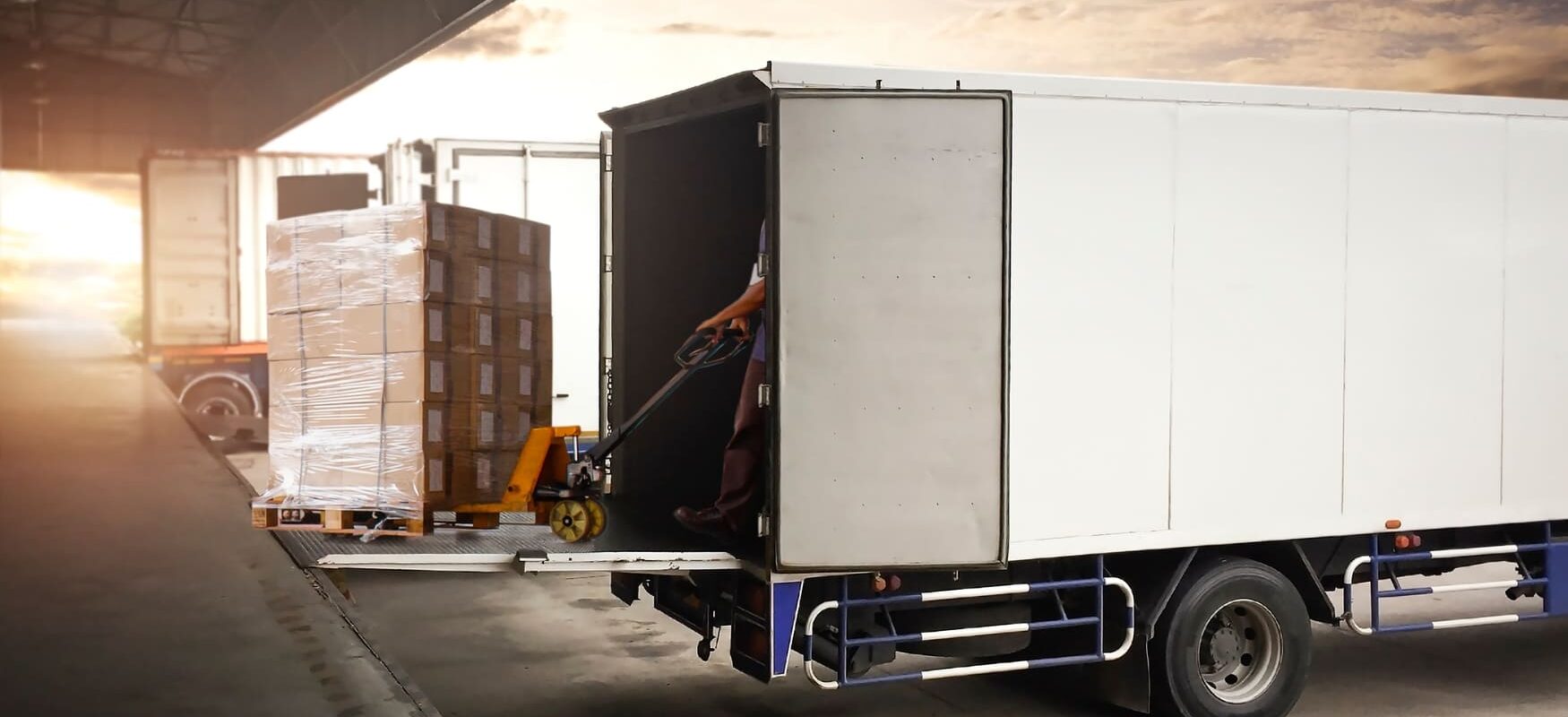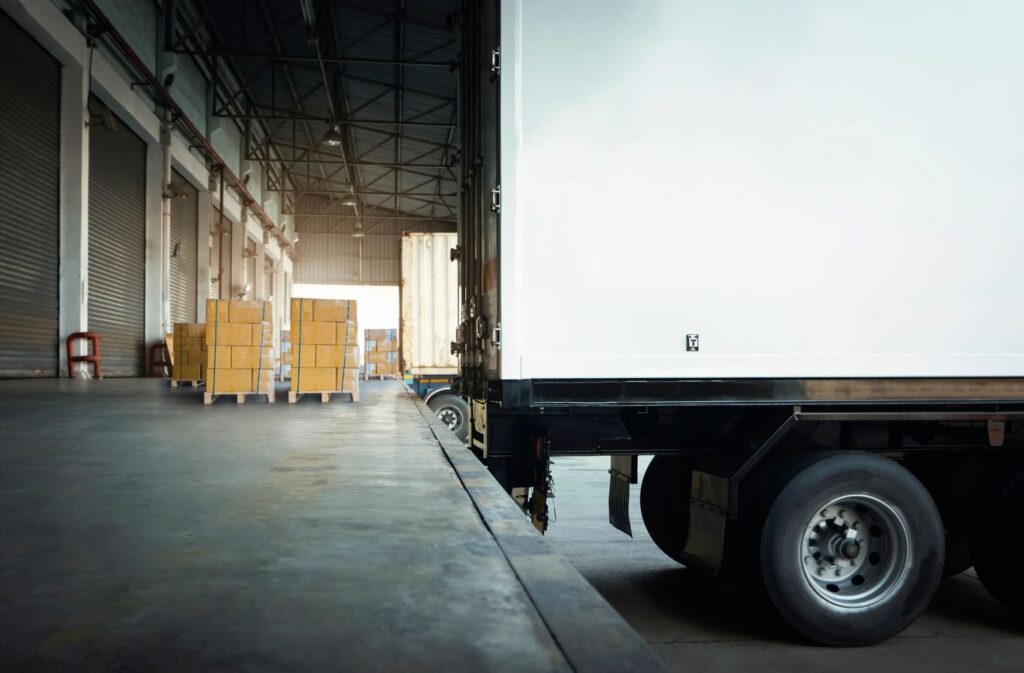Freight Consolidation Services in North America: Top Benefits for Small Businesses

Freight consolidation (also known as consolidated freight shipping) means combining several smaller shipments into one larger load. This strategy – often called “carpooling for cargo” – lets businesses pay only for the space they use. By grouping multiple LTL shipments into a single full truckload or container, small and midsize companies (e-commerce sellers, manufacturers, importers/exporters and the like) unlock bulk shipping rates and simpler logistics across North America. Olimp Warehousing offers these freight consolidation services across the U.S., Canada and Mexico (with a key hub in Miami), helping clients cut costs and streamline delivery.
What is Freight Consolidation?
Freight consolidation merges smaller cargo from different shippers into one full truck or container. At a consolidation hub or warehouse, workers unload individual LTL (less-than-truckload) orders, sort them, then load them together into a single FTL (full-truckload) shipment. Once the combined shipment reaches its destination or a break-bulk center, it’s unpacked and the original orders are delivered to each receiver. In other words, freight consolidators or 3PL providers act as the “glue” that fills a truck or container with goods from multiple customers headed the same way. This approach maximizes truck capacity and means fewer empty miles, so logistics runs more efficiently. Many e-commerce and import businesses use freight consolidation, entrusting their multiple pallets or parcels to a warehousing partner who groups them for economical transport.
Key Benefits of Freight Consolidation
Consolidated freight shipping delivers big advantages to small businesses:

- Lower Costs: Consolidated freight means companies pay for one full truck or container instead of several partially-filled loads. Shippers avoid costs for multiple drivers, trailers, and handling, and benefit from bulk rates. In practice, you pay only for the space your freight actually occupies. Lower shipping costs directly improve margins, and if customers pay freight surcharges, they’ll pay a lower rate as well.
- Faster Transit: Shipping one large consolidated load cuts transit time. Instead of sending three separate LTL deliveries over several days, consolidated freight moves once (directly to a break-bulk point), and the goods arrive together. This means customers get all their items at once, and shippers don’t wait for multiple deliveries. In many cases, a consolidated shipment can reach its destination in a fraction of the time it takes multiple stops.
- Reduced Damage: Fewer loading and unloading events means less handling and less risk of damage. Traditional LTL shipments are loaded and unloaded at many stops, but consolidated freight stays on one truck for most of its journey. Properly palletized consolidated loads are far less likely to be jostled or misplaced, greatly reducing freight claims and inventory shrinkage.
- Easier Tracking: With consolidation, there is only one tracking number and one estimated delivery, instead of one per LTL pallet or box. This makes supply chain visibility and customer updates simpler. Shippers and receivers no longer juggle multiple tracking systems or timelines for a single order. Simplified tracking means less administrative work and fewer phone calls to carriers.
- Customer Satisfaction: Consolidation helps ensure customers get all their items together, on time, and intact. They receive their orders in one delivery and with fewer damages, which builds trust and loyalty. This reliability – fewer missing packages, faster delivery, and less damage – often translates into repeat business and stronger relationships.
- Greener Shipping: Consolidation reduces the number of trucks (or containers) on the road or in the air. Fewer vehicles means lower fuel consumption and CO₂ emissions. This not only cuts costs, but also helps companies meet sustainability goals and corporate “green” commitments by lowering their carbon footprint.
- Streamlined Operations: Consolidated shipments arrive in organized batches, which smooths out dock scheduling. With fewer trucks coming in, warehouse congestion and detention fees drop. Also, a consolidation plan adds consistency to shipping schedules, making it easier to plan labor and inventory. Industry experts note that a consolidation strategy drives order into the shipping schedule and reduces variability.
- Scalability: Small and medium-sized shippers can achieve volume they couldn’t on their own by pooling shipments with others. By combining loads (for example, via a 3PL or warehouse partner), businesses “leverage scale” – they meet weight or volume minimums for full-truck or full-container pricing. Even companies with only a few pallets can lock in bulk rates and better carrier terms through consolidation.
Who Benefits from Consolidated Freight Shipping?
Freight consolidation helps a wide range of companies:
- E-commerce & Retailers: Online stores and chains receiving goods from multiple suppliers can bundle shipments to a central location. Consolidation lets them ship combined orders in one truck, saving money and avoiding multiple small deliveries.
- Manufacturers & Distributors: Producers or wholesalers with regular shipments can send their outputs to customers or branches more efficiently. By pooling loads destined for the same region, they cut per-unit freight costs and eliminate paying for unused trailer space.
- Importers & Exporters: Global trading firms often consolidate overseas cargo into containers, then use consolidation at U.S. ports. Many importers work with international freight consolidators at gateway hubs (like Miami) to combine LCL shipments before inland transport. From there, domestic consolidation services (like Olimp’s North American warehouses) take over, handling the inland distribution of those combined loads.
In short, any business that ships irregularly or in smaller quantities – yet needs the advantages of large-scale trucking – can benefit from consolidated freight shipping. Firms that do not fill entire trailers on their own gain volume discounts, simplified logistics, and more predictable lead times by partnering with consolidation services.
Multimodal Consolidation: Air, Ocean, and Road
Freight consolidation isn’t limited to trucks. It’s used in air and ocean shipping as well, maximizing capacity across all transport modes. Consolidation helps fill available capacity and ensures that trucks, ships, and planes operate more efficiently. In practice:
- Air Freight Consolidation: Multiple shipments share space on one airplane. This makes air freight more affordable and is ideal for urgent or perishable goods. It’s the fastest mode because one consolidated load clears customs and flies together.
- Ocean Freight Consolidation: Many small LCL orders are loaded into a single FCL (full-container load). Ocean consolidation is cost-effective for large or heavy shipments, especially internationally. By grouping cargo into fewer containers, companies avoid the high costs of multiple part-load bookings.
- Ground Freight Consolidation: The most common form is combining several LTL shipments onto one full truck. This ground consolidation in warehouses drives down domestic shipping costs and transit times. Whether by road, rail, or intermodal containers, consolidating ground freight is the workhorse of domestic logistics.
Having multiple modes means businesses can balance speed and cost. Urgent items might use consolidated air cargo, heavy international loads use ocean containers, and routine domestic shipments rely on LTL-to-FTL consolidation on trucks.
International Freight Consolidators
In international trade, consolidation happens at both the origin and the destination. Overseas suppliers often combine smaller shipments into shared containers before transport. When these shipments arrive in the U.S., logistics providers and freight forwarders act as international freight consolidators, grouping ocean or air cargo by destination region.
In cities like Miami, a key entry point for global freight, many less-than-container-load (LCL) shipments are split, combined, or redirected before moving inland. This process helps businesses reduce costs, simplify customs handling, and speed up distribution across North America.
By working with international freight consolidators, importers and exporters can ensure smoother transitions from global shipping lanes to domestic distribution networks.
OLIMP Warehousing: Your Partner in Consolidation
At Olimp Warehousing, we offer smart and efficient freight consolidation services across North America, helping small businesses and import/export companies cut shipping costs, reduce delays, and simplify their supply chains. With a network of strategically located warehouses, Olimp acts as your consolidation hub—receiving shipments from multiple suppliers and combining them into single, cost-effective loads for final delivery.
Whether you’re shipping a few pallets or managing orders from various vendors, our team ensures your freight is stored, grouped, and shipped with precision. Unlike international freight consolidators, Olimp focuses solely on domestic distribution, giving you faster service, regional expertise, and total control over your inland logistics.
With Olimp, you benefit from:
- Nationwide warehouse access across North America
- Reduced per-shipment costs through consolidated freight
- Improved delivery speed and fewer damaged goods
- Full visibility and tracking across every load
- Scalable solutions that grow with your business
Let Olimp Warehousing streamline your freight operations and help you ship smarter
Frequently Asked Questions (FAQ) – OLIMP Warehousing
Q: How does freight consolidation save money?
By spreading shipping costs across multiple shippers and maximizing container/truck usage, it lowers cost per unit, reducing overall freight expenses.
Q: When is it beneficial to consolidate shipments?
Ideal for small-to-medium businesses shipping pallets or boxes to the same region, especially when volumes are too small to justify a full truckload.
Q: Are there any drawbacks of consolidation?
Yes, longer lead times, more complex logistics, and potential delays due to multiple handling and coordination.
Q: What types of freight consolidation exist?
Ground consolidation (LTL to FTL)
Air freight consolidation (combining air cargo into one shipment)
Ocean freight consolidation (LCL into FCL containers)
Q: Who is a freight consolidator?
A company or 3PL that aggregates multiple shipments, organizes them in a warehouse, and handles full-load dispatch to the destination.
Q: How do freight consolidation services work?
They receive smaller shipments, group them by destination, load into consolidated freight, then deconsolidate at the destination hub for final delivery.
Q: Does freight consolidation reduce carbon emissions?
Absolutely, it reduces the number of trucks and containers required, cutting fuel use and CO₂ emissions.
Q: Is freight consolidation suitable for time‑sensitive or fragile goods?
Not always. Fragile, perishable, or temperature-controlled cargo may suffer from extra handling, so sometimes dedicated shipping is safer.
You may be interested in

Full Truckload (FTL) Shipping Services: How It Works, Costs & Use Cases
Full truckload shipping (FTL) is a freight transport mode where one shipper’s cargo occupies an entire truck trailer. In FTL service – also known as FTL trucking or full truckload freight transport – a carrier dedicates a 48′ or 53′ trailer exclusively to one shipment. Unlike less-than-truckload (LTL) shipping (where freight from multiple shippers shares […]

Retail Consolidation Services: The Complete Guide to Cost Savings and OTIF Compliance
Retail consolidation is a logistics strategy that groups multiple small shipments for the same retailer into one larger truckload. Instead of sending many underfilled LTL (less-than-truckload) loads, suppliers pool their goods to form consolidated full truckloads. This approach leverages economies of scale – sharing truck space to one retail center – and dramatically cuts per-unit […]

What Is Transloading? Definition, Services & Facilities Guide
Transloading moves cargo between trucks, trains and ships to cut costs and speed delivery. It means unloading freight from one mode (like a ship’s container) and reloading it onto another (such as a freight train or trailer). This process lets importers and shippers mix modes – using rail or ocean for long hauls and trucks […]
Ready to streamline your warehousing needs?
Request a quote today and discover how OLIMP's tailored solutions can optimize your operations